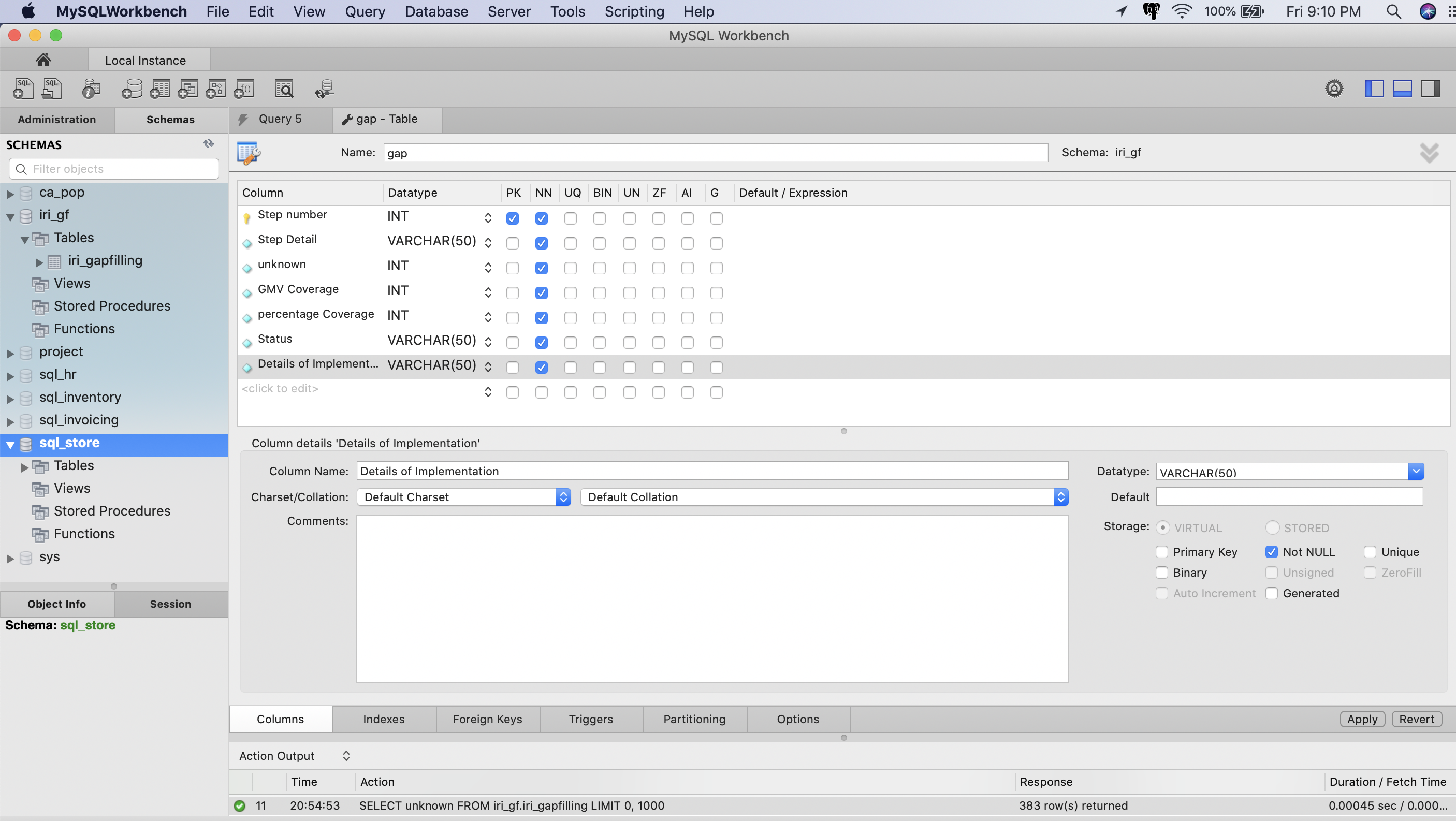

Hello – Am not able to connect Workbench to the SQLExpress db engine installed on my laptop’s Windows 7 Professional hard drive. Now you will see the databases list in the area on the left. Now under the SQL Development section you will see your connection listed in the Open Connection to Start Querying box.Click Ok again to accept the connection settings.MySQL Workbench should say “ Connection parameters are correct“.
MYSQL WORKBENCH FOR MAC PASSWORD
Type your password and click the “ Save Password in Vault” check box.Click Ok.Password: cPanel password or the password for the database user that was created. Username: Your cPanel username or the user you created for the database. Hostname: You can use your domain our your cPanel IP address. The credentials will be like the following:Ĭonnection Name: You can name this whatever you like. In the “ Set up a New Connection Dialogue” box, Type your Database connection credentials.Click New Connection towards the bottom left of MySQL Workbench.What’s My IP address? Steps to connect to your database remotely You can get your IP address by going to the following link: In order for you to be able to connect to your databases remotely you will need to add your local computer IP address to the Remote MySQL in cPanel.

Specifically, in many of the cases where we previously used Postgres, we now use Schemaless, a novel database sharding layer built on top of MySQL ( ).Don’t have time to read the article? Watch our walk-through video. Since that time, the architecture of Uber has changed significantly, to a model of microservices and new data platforms. The early architecture of Uber consisted of a monolithic backend application written in Python that used Postgres for data persistence. Fun fact - earlier in Uber's history we'd actually moved from MySQL to Postgres before switching back for good, & though we published the article in Summer 2016 we haven't looked back since: In essence, it was due to a variety of limitations of Postgres at the time. Our most popular (& controversial!) article to date on the Uber Engineering blog in 3+ yrs. We use its excellent built-in full-text search, which has helped us avoid needing to bring in a tool like Elasticsearch, and we've really enjoyed features like its partial indexes, which saved us a lot of work adding unnecessary extra tables to get good performance for things like our "unread messages" and "starred messages" indexes. As a result, we were able to delete a bunch of custom queries escaping the ORM that we'd written to make the MySQL query planner happy (because postgres just did the right thing automatically).Īnd then after that, we've just gotten a ton of value out of postgres. We didn't have to do any real customization (just some tuning settings for how big a server we had), and all of our most important queries were faster out of the box. We ended up getting so frustrated that we tried out PostgresQL, and the results were fantastic.
MYSQL WORKBENCH FOR MAC MANUAL
Issues ranged from bad collation defaults, to bad query plans which required a lot of manual query tweaks. However, we found that even though we were using the Django ORM for most of our database access, we spent a lot of time fighting with MySQL. Zulip started out as a MySQL project back in 2012, because we'd heard it was a good choice for a startup with a wide community. We've been using PostgreSQL since the very early days of Zulip, but we actually didn't use it from the beginning.


 0 kommentar(er)
0 kommentar(er)
